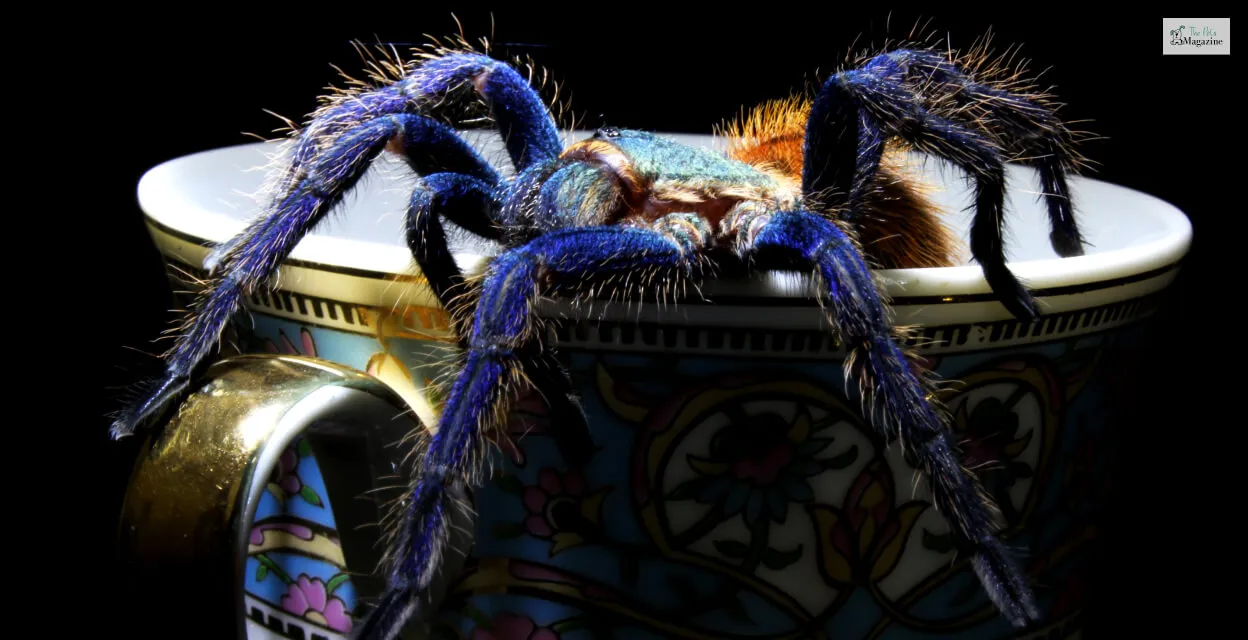Essential Cobalt Blue Tarantula Habitat Needs
Creating the perfect cobalt blue tarantula environment is crucial for the health and well-being of these stunning arachnids. As a captivating species known for their vibrant coloration, cobalt blue tarantulas require specific environmental conditions to thrive in captivity. This guide provides the top 5 must-knows for setting up an optimal habitat that mimics their natural environment, ensuring your pet lives a long, healthy, and colorful life. Understanding these needs will not only enhance your tarantula’s quality of life but also allow you to enjoy observing its unique behaviors and beauty. The cobalt blue tarantula, with its striking blue legs and carapace, is a prized pet, and providing the correct environment is the first step towards successful tarantula keeping.
Temperature and Humidity Requirements
Maintaining the correct temperature and humidity levels within the cobalt blue tarantula environment is paramount. These factors directly impact the tarantula’s metabolism, molting process, and overall health. The ideal conditions replicate their natural habitat in Southeast Asia, where they are found. Improper temperature or humidity can lead to health issues and even prove fatal, so it’s important to be diligent with monitoring and adjustments.
Optimal Temperature Range
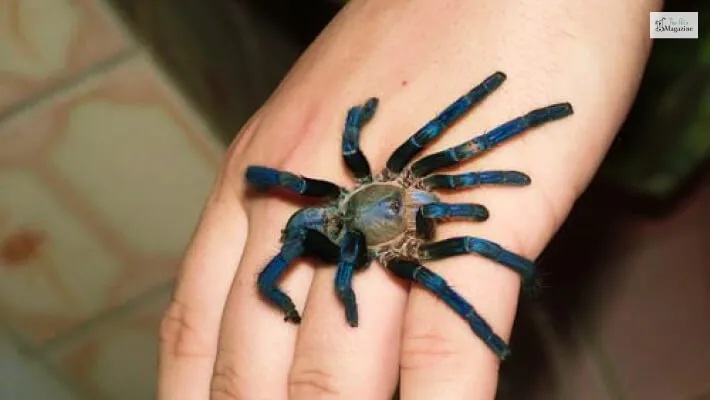
The ideal temperature range for a cobalt blue tarantula is between 75 to 85 degrees Fahrenheit (24 to 29 degrees Celsius). This temperature range promotes healthy activity, feeding, and molting cycles. You can monitor the temperature using a digital thermometer placed inside the enclosure. Avoid placing the enclosure in direct sunlight or near heat sources, as this can cause temperature fluctuations. In cooler environments, a low-wattage heat mat or a ceramic heat emitter can be used to maintain the desired temperature. Careful regulation is vital to prevent overheating or chilling, which can stress the tarantula.
Maintaining Humidity Levels
Humidity plays a crucial role in the health of cobalt blue tarantulas, aiding in the molting process. The recommended humidity level is between 60% and 70%. Use a hygrometer to accurately measure humidity within the enclosure. To maintain these levels, lightly mist the substrate and the enclosure walls with dechlorinated water a few times a week. Avoid oversaturating the substrate, which can lead to mold growth. Proper ventilation is essential to balance humidity and prevent stagnation. The aim is to create a slightly humid environment that mimics their natural jungle habitat, promoting a healthy and vibrant tarantula.
Substrate Selection is Important
The substrate in your cobalt blue tarantula environment serves multiple purposes, including providing a suitable burrowing medium, helping to maintain humidity, and creating a naturalistic environment. The right substrate will not only make your tarantula feel secure but will also contribute to the overall aesthetics of the habitat. Careful consideration should be given to the choice of substrate, as different materials have varying properties and impact on the environment within the enclosure. The substrate is a foundational element to your tarantula’s well-being.
Best Substrate Choices
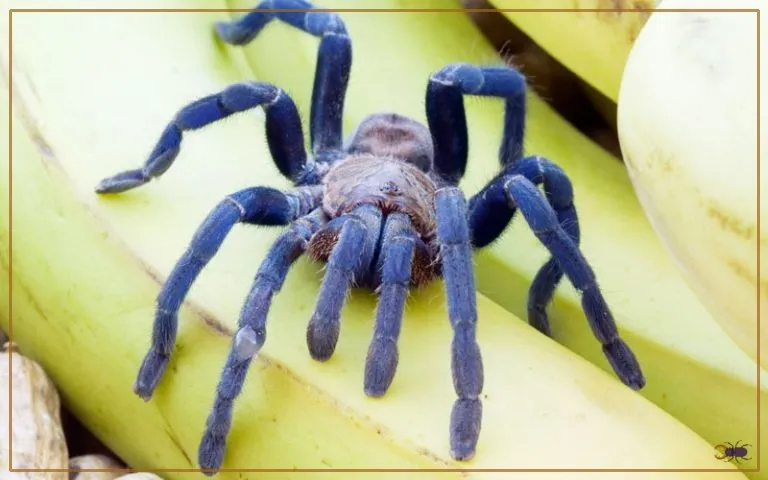
A mixture of substrates often provides the best environment for a cobalt blue tarantula. A popular and effective substrate mix consists of peat moss, vermiculite, and a small amount of coco fiber. These materials retain moisture well, allowing you to maintain the required humidity levels. Avoid using substrates that are too dusty or can be easily ingested, like sand or wood shavings. The substrate should be deep enough for the tarantula to burrow if it chooses, providing a sense of security. Consider the ease of cleaning and maintenance when making your selection, and always prioritize the health and well-being of your tarantula.
Substrate Depth and Maintenance
The depth of the substrate is crucial for providing the tarantula with space to burrow and feel safe. A depth of 4-6 inches (10-15 cm) is generally recommended for adult cobalt blue tarantulas. This depth allows them to create burrows and retreats. Regular maintenance involves removing any uneaten food, feces, and molted exoskeletons. Spot clean the substrate as needed and completely replace it every 6-12 months, depending on the size of the enclosure and the amount of waste produced. Regular cleaning prevents the build-up of bacteria and maintains a healthy environment. Monitoring the substrate condition is a key aspect of habitat management.
Enclosure Size and Type
Choosing the right enclosure is essential for the cobalt blue tarantula’s comfort and security. The enclosure should be secure, well-ventilated, and provide ample space for the tarantula to move around and engage in natural behaviors. The size and type of enclosure will impact the tarantula’s ability to thrive, so proper selection is a crucial element in their habitat setup. Avoid overcrowding the enclosure, which can stress the tarantula and increase the risk of aggression. The right enclosure will contribute to a happy and healthy tarantula.
Appropriate Enclosure Dimensions
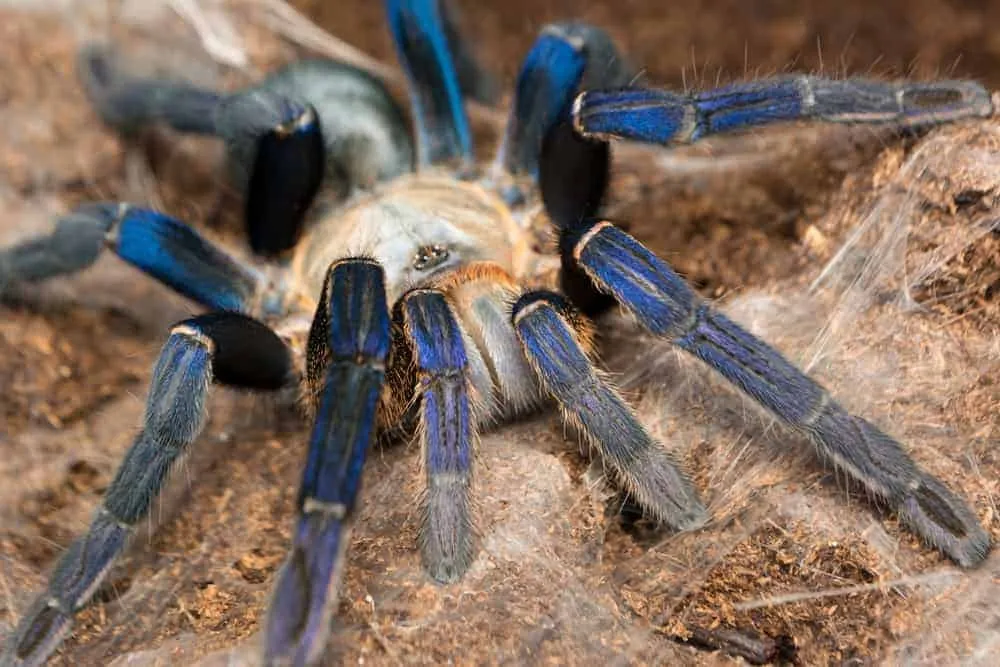
For an adult cobalt blue tarantula, a terrarium that is at least 12x12x12 inches (30x30x30 cm) is recommended, but a larger enclosure is always better. A slightly taller enclosure is often preferred because these tarantulas are terrestrial but may still climb. The enclosure should have a secure lid to prevent escape. Ensure that the ventilation is sufficient to prevent the build-up of excessive moisture. The enclosure should also be made of a durable material like glass or acrylic that allows for easy viewing and cleaning. The size of the enclosure needs to match the size of the tarantula, but always provide more space than less to ensure the tarantula thrives.
Ventilation and Safety
Proper ventilation is crucial to prevent the build-up of mold and maintain optimal humidity levels. The enclosure should have ventilation holes near the top, and potentially on the sides, to allow for air circulation. Avoid placing the enclosure in direct sunlight, which can cause excessive heat build-up. Ensure the enclosure is free from any potential hazards, such as sharp edges or loose parts, which could injure the tarantula. The lid must be secure to prevent escape and to keep other animals and children away from the tarantula. Regular inspection for any signs of damage or wear and tear is essential for maintaining the safety and functionality of the enclosure.
Decorating the Habitat
Adding decorations to the cobalt blue tarantula environment not only enhances the visual appeal of the enclosure but also provides enrichment for the tarantula. Decorations offer hiding places, encourage natural behaviors, and help the tarantula feel secure. The right decorations will contribute to a more naturalistic and stimulating environment for your pet, enriching its life within the enclosure. Remember to choose decorations that are safe, non-toxic, and easy to clean to maintain a healthy habitat.
Essential Decorations
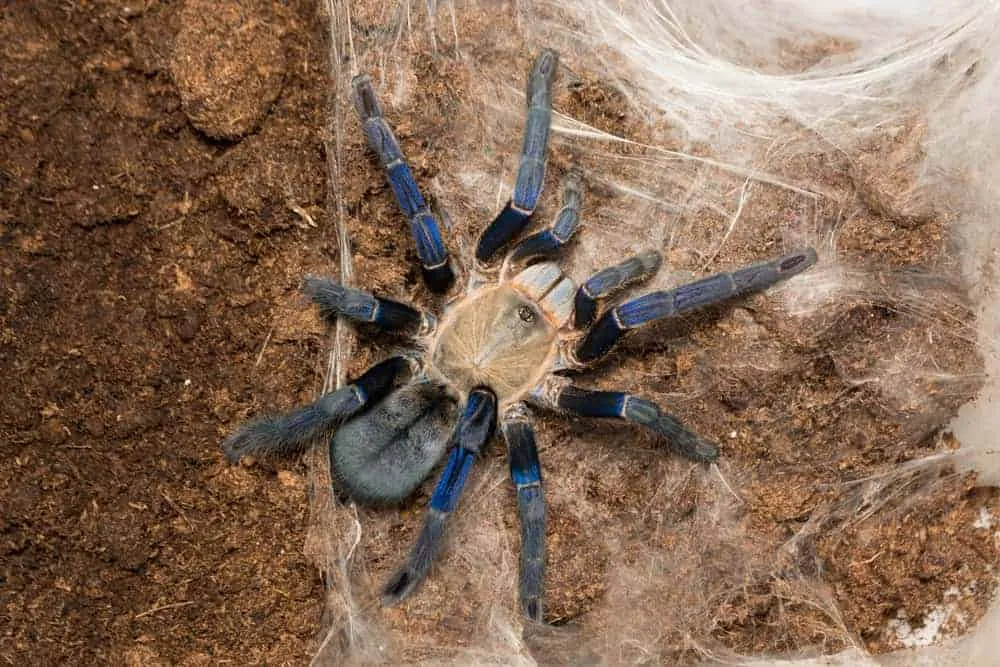
Essential decorations include a hide, such as a piece of cork bark or a half-log, which provides a secure retreat. Live or artificial plants can add to the aesthetic appeal and help maintain humidity. Ensure that any decorations are securely placed to prevent them from falling and potentially injuring the tarantula. Avoid using sharp or jagged decorations that could harm the tarantula during molting or movement. Consider the tarantula’s natural behavior and provide elements that encourage exploration and a sense of security. Decorations enrich the environment, creating a more engaging and natural setting for the cobalt blue tarantula.
Water and Feeding
Providing a proper diet and access to fresh water are essential for the health and well-being of your cobalt blue tarantula. These creatures require a carefully managed feeding schedule and consistent access to clean water to thrive in captivity. Proper nutrition and hydration are fundamental aspects of tarantula care, and neglecting them can lead to serious health issues. Attention to these details will ensure the long-term health and vitality of your pet.
Water Bowl and Fresh Water
A shallow water dish is crucial for providing the tarantula with a source of fresh water. The water dish should be shallow enough to prevent the tarantula from drowning, especially for smaller specimens. Use dechlorinated water to prevent any harmful chemicals from affecting the tarantula. Regularly clean the water dish and refill it with fresh water, at least a couple of times a week, or more frequently if needed. The availability of clean water is vital for hydration and the overall health of the tarantula, ensuring that it can maintain proper bodily functions.
Feeding Frequency
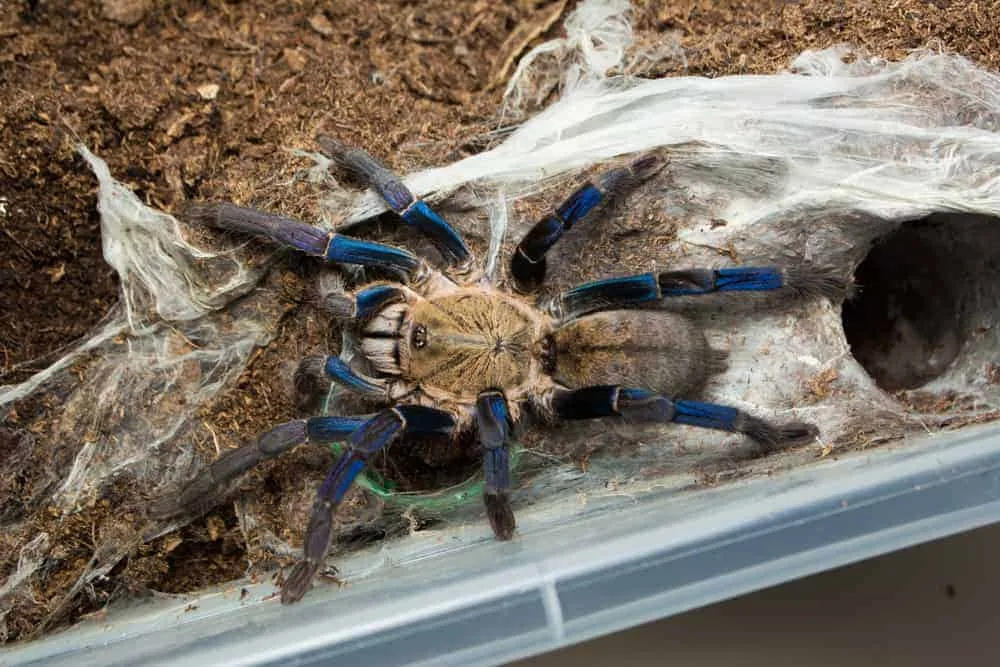
Cobalt blue tarantulas are opportunistic feeders, and their feeding frequency will depend on their age and size. Spiderlings and juveniles may need to be fed 2-3 times a week, while adults can be fed once a week or every other week. Offer appropriately sized insects, such as crickets, roaches, or mealworms. Remove any uneaten food within 24 hours to prevent mold growth and maintain the cleanliness of the enclosure. Observe your tarantula’s behavior and adjust the feeding frequency based on its appetite and overall condition. Do not overfeed, as this can cause health issues. Always ensure that the insects are gut-loaded to provide additional nutritional benefits.
Conclusion
Creating a thriving cobalt blue tarantula environment involves paying close attention to temperature, humidity, substrate, enclosure size, and decor, along with providing proper water and feeding. By following these top 5 must-knows, you can provide your cobalt blue tarantula with a habitat that mimics its natural environment and supports its health and well-being. Remember that careful observation, consistent maintenance, and a dedication to the tarantula’s specific needs are crucial for successful tarantula keeping. With the right care, your cobalt blue tarantula can thrive, showcasing its incredible colors and fascinating behavior for many years to come. Enjoy the journey of caring for these beautiful and captivating creatures.
